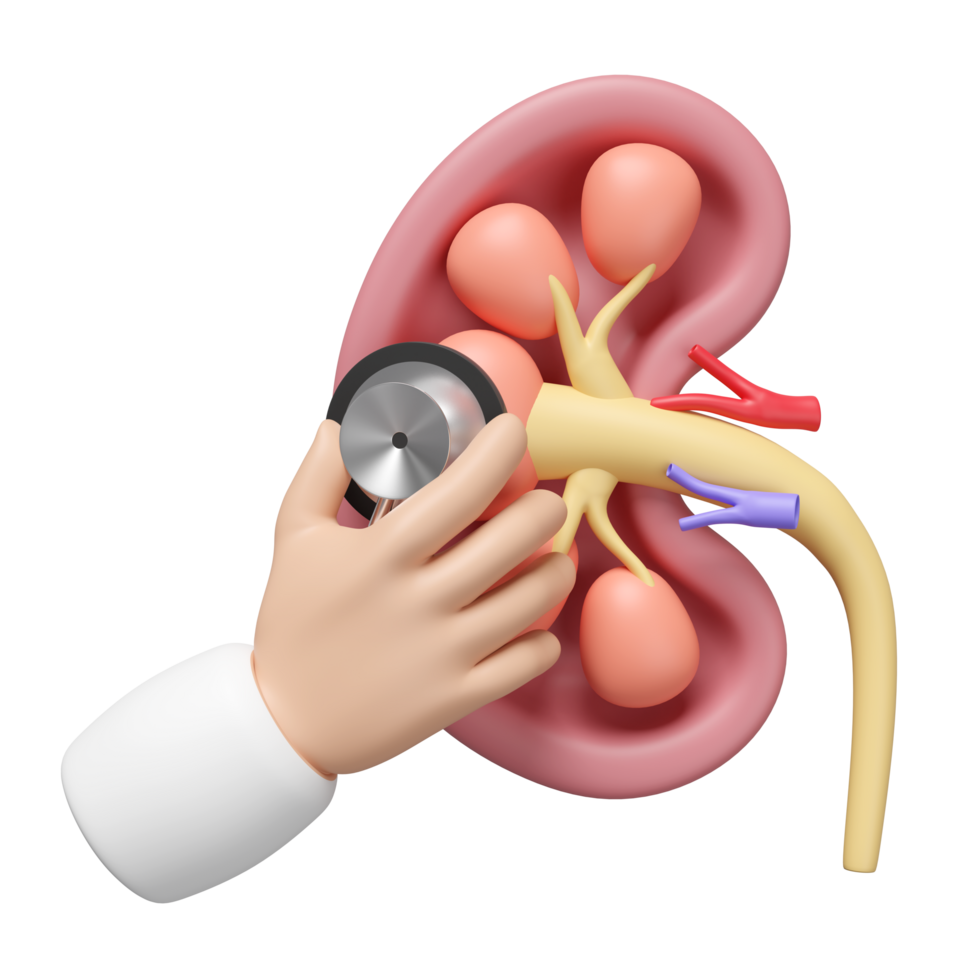Kidney cancer: what is it?
A tumor, often known as a kidney mass, is an abnormal growth in the kidney. Certain kidney tumors are malignant (cancerous), whereas others are benign (not cancerous). Kidney masses under 4 cm are benign in one out of four cases. While larger masses are more likely to be malignant, smaller ones are more likely to be benign. Kidney tumors come in a wide variety of forms.
• Renal Cell Carcinoma (RCC): These are the most common malignant kidney tumors and are found in the lining of the small tubes in the kidney.
• Benign Kidney Tumors: These can grow quite large but they are almost always non-cancerous and do not spread to other organs.
• Wilms Tumor: Wilms tumors almost always occur in children and are rarely found in adults.
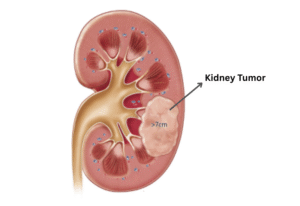
Why Does Kidney Cancer Occur?
Kidney cancer is not caused by a single factor. However, there are other factors that can raise your risk of kidney cancers, including:
Smoking;
poor diet and obesity;
a family history of hypertension
Receiving dialysis for kidney disease
• Exposure to chlorinated chemicals at work
• Genetics
Kidney cancer is diagnosed in more males than women.
Native Americans, Alaskan Natives, and African Americans are more likely to get kidney cancer. Although kidney cancer can strike at any age, it is more common in elderly adults (those over 75). Your chances of survival increase with the early stage of kidney cancer diagnosis.
What Signs of Kidney Cancer Are There?
In the early stages, the majority of kidney masses are asymptomatic. In the event that symptoms exist, they will probably be:
Blood in the urine, or hematuria; flank pain between the hips and ribs
• One side of the body has persistent low back discomfort that is not related to an accident.
• Fever that is not brought on by an infection and does not go away;
• Anemia (low red blood cell count);
• Loss of appetite and weight loss without a documented cause
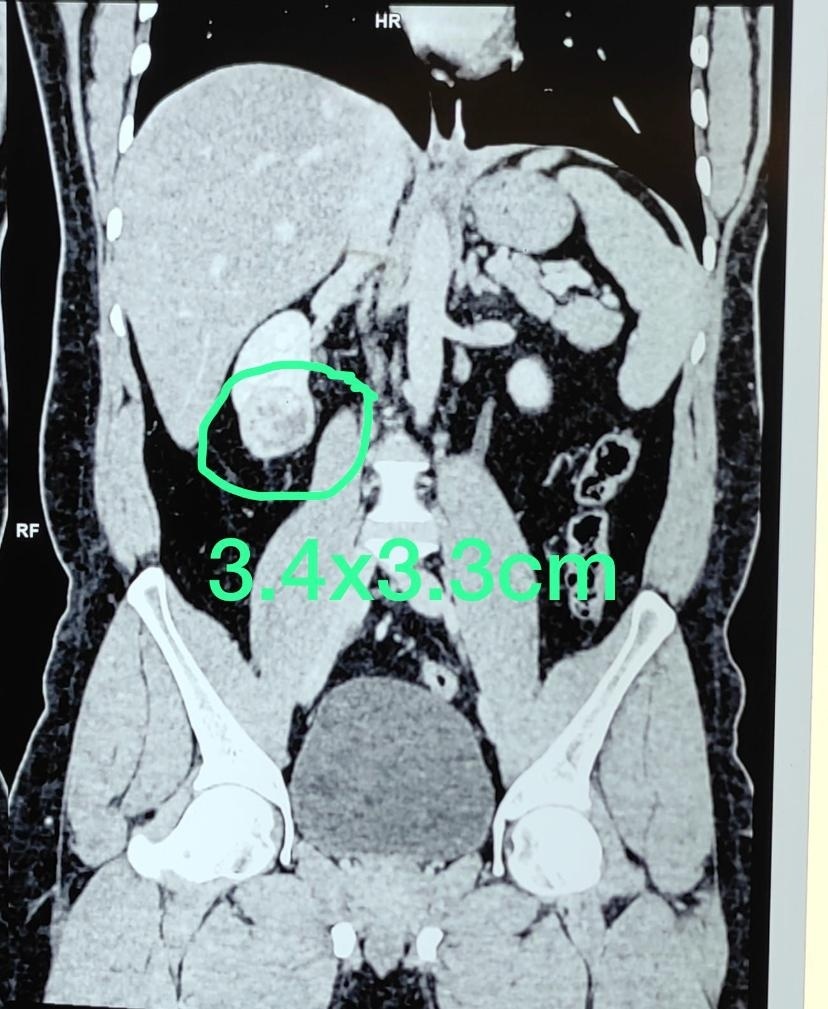
CT scan image showing RENAL TUMOUR
How Do We Treat Kidney Cancer?
Preserving the kidney’s ability to function is the aim of kidney cancer treatment. One of the following approaches of tumor treatment may be recommended by your physician:
Active surveillance, also known as watch and wait; thermal ablation, which uses extremely high or low temperatures to kill cells; partial nephrectomy, which removes a portion of the kidney;
and radical nephrectomy, which removes the entire kidney.
Active surveilance
Your doctor will examine you for tests to monitor tiny lumps under 3 cm in size as part of active monitoring. The objective is to stop the disease from becoming worse while avoiding any dangers or side effects from previous treatments. Depending on the need, you will be seen every three, six, or twelve months. The size and stage of your tumor will determine how frequently you see your doctor.
Ablation
Your surgeon might think about ablation if your tumor is tiny (less than 3 cm). Ablation uses extremely high or low temperatures to eliminate the tumor.
• Cryoablation, also known as cold ablation, is the process of killing tumor cells by passing extremely cold gases through a probe into the tumor.
• Radiofrequency ablation, also known as hot ablation, involves heating the tumor with an electric current to kill the cells.
Partial nephrectomy
In a partial nephrectomy, the tumor and a portion of the kidney are removed by the physician. Your doctor might recommend a partial nephrectomy if your tumor is 4 cm or smaller. For bigger tumors, a partial nephrectomy may also be performed.
Radical Nephrectomy
A radical nephrectomy involves the removal of the entire kidney.
This is carried out if your kidney tumor is really large or exhibits symptoms of developing into cancer. If the other kidney is removed, your body can still function properly with just one.

Laparoscopic radical nephractomy
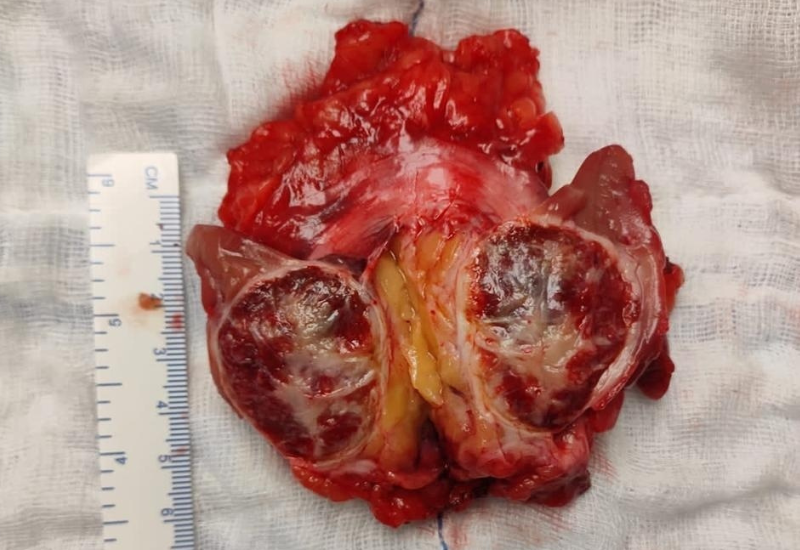
Speciemn showing RENAL TUMOUR
Targeted Treatment
Drugs used in targeted therapy can only destroy the body’s kidney cancer cells. They are employed to prevent the growth of cancer cells by blocking proteins or new blood vessels.
Usually, advanced (metastatic) illness is treated with these therapies. It has been demonstrated that targeted therapy can reduce or slow the growth of kidney tumors.
Immunotherapy
One strategy to boost our immune system and combat cancer is immunotherapy. The body’s natural defense against illness is the immune system. In a tiny percentage of patients, these therapies can reduce kidney tumors.
Minimally invasive therapies for partial and radical nephrectomy:
- Laparoscopic nephrectomy
- Robotic nephrectomy.
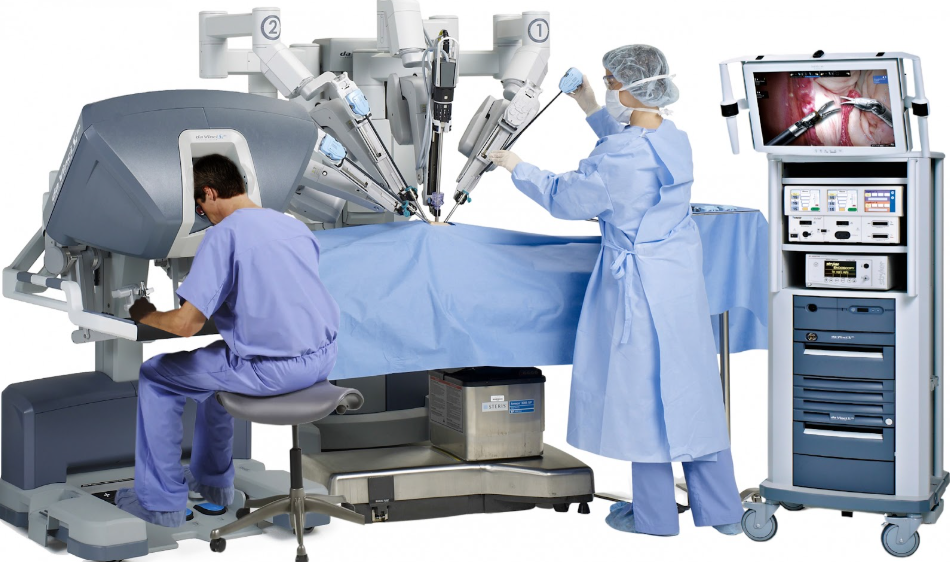
Robotic Nephroctomy
Why Choose Us?
Experience and Expertise
Advanced Technology
Personalized Evidence based Treatment
Honesty and Integrity
Affordable Treatments

